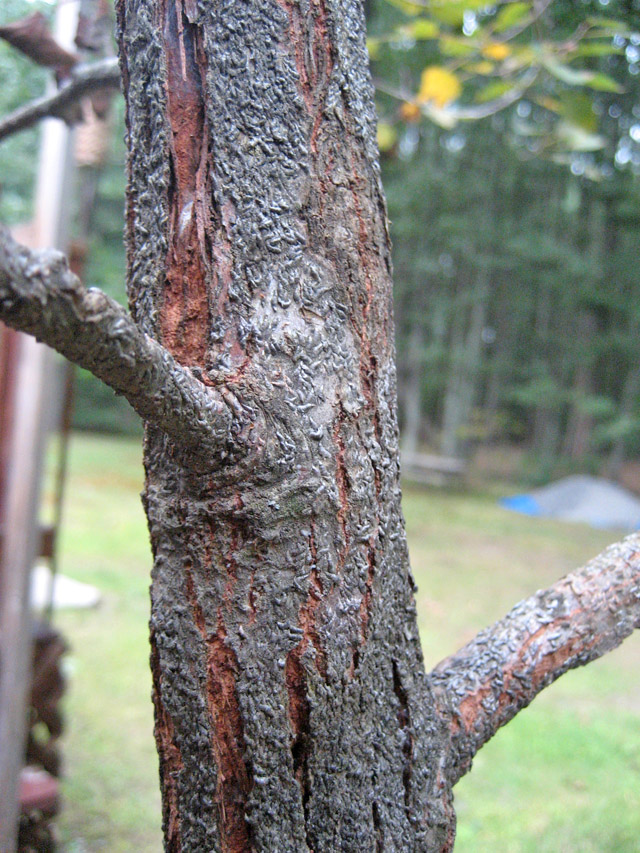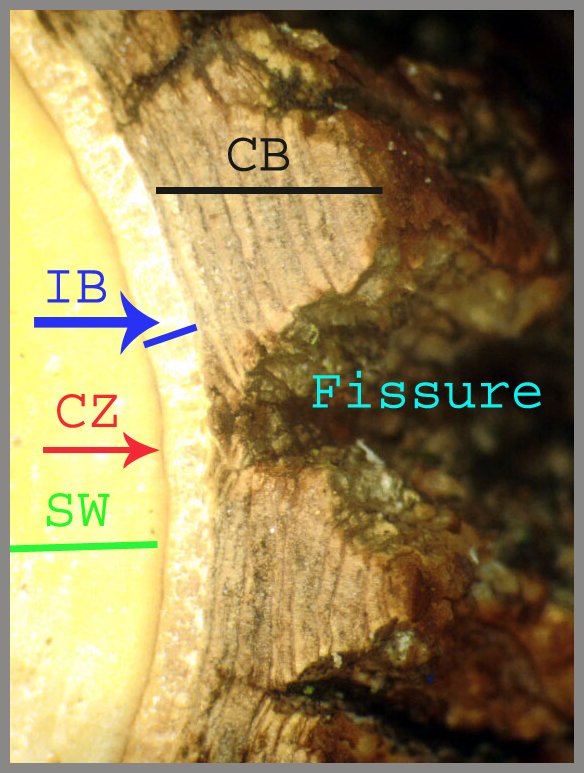Fissure: Difference between revisions
Jump to navigation
Jump to search
No edit summary |
No edit summary |
||
| Line 3: | Line 3: | ||
1. Bark that is furrowed and ridged, or splitting lengthwise.<br><br> | 1. Bark that is furrowed and ridged, or splitting lengthwise.<br><br> | ||
http:// | http://whitecanker.net/Pictures/2006-09-02%20Dead%20Linden%20tree%20in%20neighbor%20Mark%27s%20yard-6A.jpg<br><br> | ||
An example of a tree exhibiting fissures.<br> | |||
Source: http:// | Source: http://whitecanker.net/WhiteCanker.asp<br><br> | ||
Latest revision as of 10:56, 3 October 2017
1. Bark that is furrowed and ridged, or splitting lengthwise.

An example of a tree exhibiting fissures.
Source: http://whitecanker.net/WhiteCanker.asp

Bark fissures form on maturing trees. These bark plates only divide in a lengthwise direction.
Source: http://www.treedictionary.com/DICT2003/HTMLFILES/fissures.html